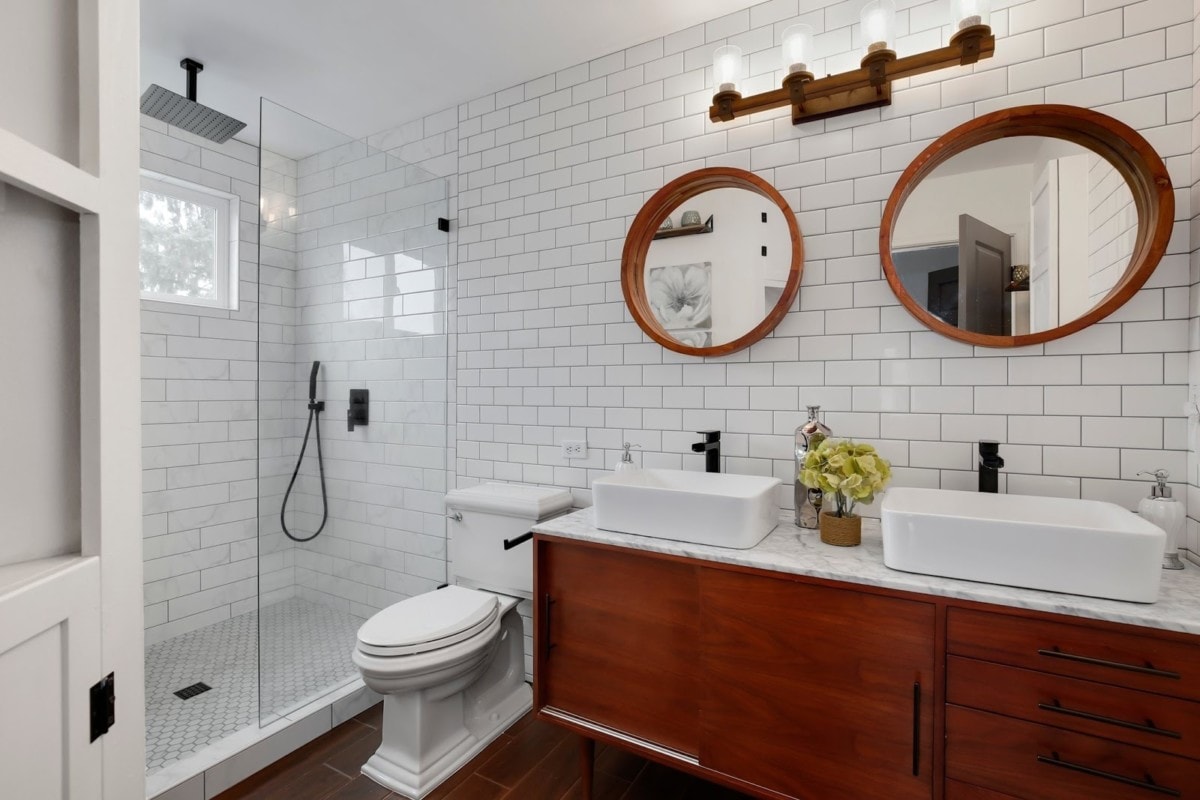Buying a home is a significant investment, and ensuring the house is in the best condition possible is a top concern for any buyer, regardless of whether it’s your first home or investment property.
While a general home inspection is almost always recommended for anyone buying a home, savvy buyers will do their due diligence by scheduling specialty home inspections, especially if the house is older or has specific features. So whether you’re eyeing a new house in San Diego or browsing homes for sale in Detroit, learn more about the different types of home inspections you should consider.
Do I need a specialized home inspection?
Brian Wendorf of Integrated Home Inspections compares home inspections to a visit to the doctor. “Getting a home inspection is like seeing a trusted general practitioner who will evaluate overall health and recommend seeing a specialist when there is a question or concern about something that may be a latent issue.”
You should always consider specialized home inspections based on the home’s age, location, or condition, to investigate potential issues, especially those that are common in homes in your area. General home inspections are great at giving you an idea of the overall state of the house at a point in time but may miss key details.
When it comes to buying a home, you want to make sure you know all there is to know about the property before signing on the dotted line. Here are 18 different types of home inspections you should consider:
Types of home inspections
- Roof
- Electrical
- Attic
- Chimney
- HVAC
- Mold
- Pest
- Foundation
- Plumbing
- Septic
- Radon
- Asbestos
- Pool
- Soil
- Lead-based paint
- Crawl space
- Sewer
- Wood-destroying organism (WDO)
1. Roof inspection
Roof inspectors conduct a more thorough inspection that may reveal issues that aren’t visible to the untrained eye. These can include leaks, unsecured shingles that could allow water to enter the home, and the condition of the gutters.
“Your roof is your home’s shield against the elements,” says Preston Smith of Mahogany Premium Home Inspections. “A roof inspection during a home inspection can help you spot problems early and save money on repairs. Peace of mind is priceless.”
2. Electrical inspection
Safety, comfort, and improved energy efficiency are a few of the benefits you will gain from having your electrical systems inspected by a professional. Wires can become frayed and damaged from regular wear and tear and pose a dangerous fire hazard to your home and family.
3. Attic inspection
Before you close on your dream home, make sure you get the attic checked out. Attic inspections evaluate ventilation and insulation while looking out for pests like termites.
“Many people, including some roofing companies, don’t understand the importance of roof or attic ventilation or the proper way to install a venting system,” says Sean Brady of SpecQuest. “Getting a home inspection that includes the attic can help identify deficiencies in this area, which can help prolong the life of roofing materials.”

4. Chimney inspection
Chimney inspections can alert you of any potential problems in the firebox or flue, buildup, or blockages that you can bring to the homeowners to fix before closing on the home. The inspector assesses the exterior for cracks or structural damage and clear the chimney of any buildup of creosote (a byproduct of burning wood) that can combust if left untreated.
5. HVAC inspection
A strange sound or smell could indicate an underlying issue that could affect your HVAC system, leading to increased heating and cooling costs, or worse, needing to replace it with a whole new system. An HVAC inspection provides a clearer picture of the home’s heating and cooling system, and can even give you recommendations for repairs or energy-efficient upgrades.
“The AC unit is one of the most used components in the home,” says Kal Hoffman of Miami Divum. “HVAC and vent inspections are probably one of the least thought about, but most cost-effective actions that a homeowner can do once every three to five years. A well-functioning unit with proper ventilation will not only pay for itself, but will also continue to save the homeowner money throughout its lifespan.”
6. Mold inspection
Just because you can’t see mold doesn’t mean there isn’t any lurking away in your dream home. In fact, a mold problem could indicate that the home is harboring larger issues such as water damage, leaks, or even flooding.
“Mold inspections involve a comprehensive visual assessment of the property to identify visible mold and potential mold-conducive conditions,” says Randy Cottrell of Blue Crab Inspections. “Advanced tools like infrared imaging and moisture meters are employed to detect moisture intrusions or dampness not visible to the naked eye.”
Note: Mold inspections are especially important in humid areas like Miami, FL.
7. Pest inspection
Termites and other wood-loving pests can cause irreparable damage to the property that is costly to replace. A trained pest inspector can definitively identify if there is a continuing presence of pests, such as termites, carpenter ants, rodents, or spiders, in your home’s exterior and interior. Getting a pest inspection early on will let you know you’re investing in a pest-free home.
Note: Older homes are more susceptible to pest problems.
8. Foundation inspection
Whether you’re a seasoned or first-time homebuyer, a foundation inspection can easily be overlooked when going through the types of home inspections you should consider. Large cracks in the exterior and interior walls, uneven floors, gaps between walls and the ceiling, or even doors that won’t close properly are potential warning signs that there may be bigger foundational issues that have gone unnoticed.
9. Plumbing inspection
To prevent issues like a sewer backup or a failing water heater from becoming a homeowner’s nightmare, investing in a plumbing inspection before making the down payment can bring underlying issues to light. An inspector will either conduct a visual inspection or use a diagnostic camera to verify that fixtures and appliances are installed properly and check for signs of water damage under or behind appliances.
10. Septic inspection
Like plumbing emergencies, a malfunctioning septic system can spell costly repairs (along with unpleasant odors) if they aren’t caught before you’re under contract. A trained septic inspector will locate and assess the septic tank, sludge layer, and absorption area to ensure all components are in working order. Always consider a septic inspection if you’re buying a home with a septic tank.
Note: Homes in New England states like Massachusetts are most likely to have septic systems.
11. Radon inspection
If you’re looking for your future home in regions where basements are common, requesting a radon test as part of the home’s overall inspection can help bring you peace of mind. Nearly 1 in 15 homes in the United States has elevated radon levels, and the EPA recommends that all houses be tested for radon levels during the point of sale.
In most cases, you can request the seller’s previous radon test results as part of the home inspection and use that as a point of comparison.
“Radon testing is important because it is the second leading cause of lung cancer in the US,” says New South Property Inspections owner Wes Grant.
Note: Midwestern states like Iowa and North Dakota have elevated radon levels.
12. Asbestos inspection
Houses built before 1975 might have asbestos in the building materials. An asbestos inspection should be conducted by a certified asbestos removal company. If the inspector recommends a removal, make sure this is addressed before signing off on the contract.
Note: East coast cities like Boston, which tend to have older buildings, are at higher risk for asbestos exposure.
13. Pool or spa inspection
A pool is a great outdoor amenity, but not inspecting the pool’s structure and equipment systems, such as its pumps, heaters, and filters, could cause many problems down the road. Beyond being leak-free and solid, the pool’s plumbing system needs to be inspected to ensure the water is draining properly, and that the safety covers and hardware are sufficient to secure the pool when not in use.
14. Soil stability inspection
The state of the soil around the property can play an important role in determining if the home’s foundation adequately supports the soil that surrounds it. After all, you don’t want part of the hill your future home is sitting on to slide away during a rainstorm. A soil analysis by a trained professional can help prepare you for the potential issues of hillside living and will test for the probability of erosion, gillies, or mudflows due to the soil shifting.
15. Lead-based paint inspection
Older homes built before 1978 – and even some after – could contain hazardous lead-based paint. Even low levels of exposure may cause health issues, especially if you’re buying a home with young children. A specialist will check for peeling or chipped paint around the house and collect samples to be tested in a lab for the presence of lead.
16. Crawl space inspection
Homes with crawl spaces in areas where there’s high humidity, like Seattle, WA, should be strong contenders for a crawl space inspection. As moisture condensates on surfaces in the crawl space, mold, wood rot, and even termite infestations can occur due to the space becoming increasingly humid. A professional will identify signs of a rotting crawl space and save you from making a costly mistake.
“It’s imperative this space is inspected,” says Richard Gaines of San Diego’s Home Inspector. “Health and safety are my main concern and all these issues directly affect the health and safety of the home and its occupants.”
17. Sewer inspection
Sewer inspections play a crucial role in ensuring the functionality and integrity of the sewer system in new homes. These inspections involve a comprehensive assessment of the sewer lines and components to identify any potential issues or defects.
“Sewer line maintenance is often overlooked yet can be extremely expensive to repair or replace,” says Amanda Ables of Noble Property Inspections. “A sewer scope is a visual examination into the plumbing and sewer systems to identify any defects or damage. Common problems discovered during a sewer scope can include breakage, leaks, bellying, collapsing, and clogs of the sewer lines.”
18. WDO inspection
WDO inspections, short for “wood-destroying organism” inspections, are essential evaluations conducted by licensed professionals to assess the presence of pests that can damage wood structures in homes or buildings. These inspections primarily focus on identifying termites, carpenter ants, wood-boring beetles, and other wood-destroying insects that can compromise the structural integrity of a property.
Tyler Quintard of Odyssey Home Inspection suggests that homeowners should have WDO inspections and general inspections done by different companies. “These inspections should always be performed by two inspectors, and you should always do your due diligence when identifying the right professional for each that has your fiduciary interest in mind.”


